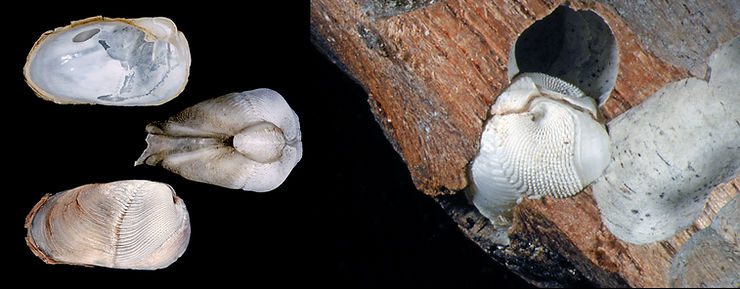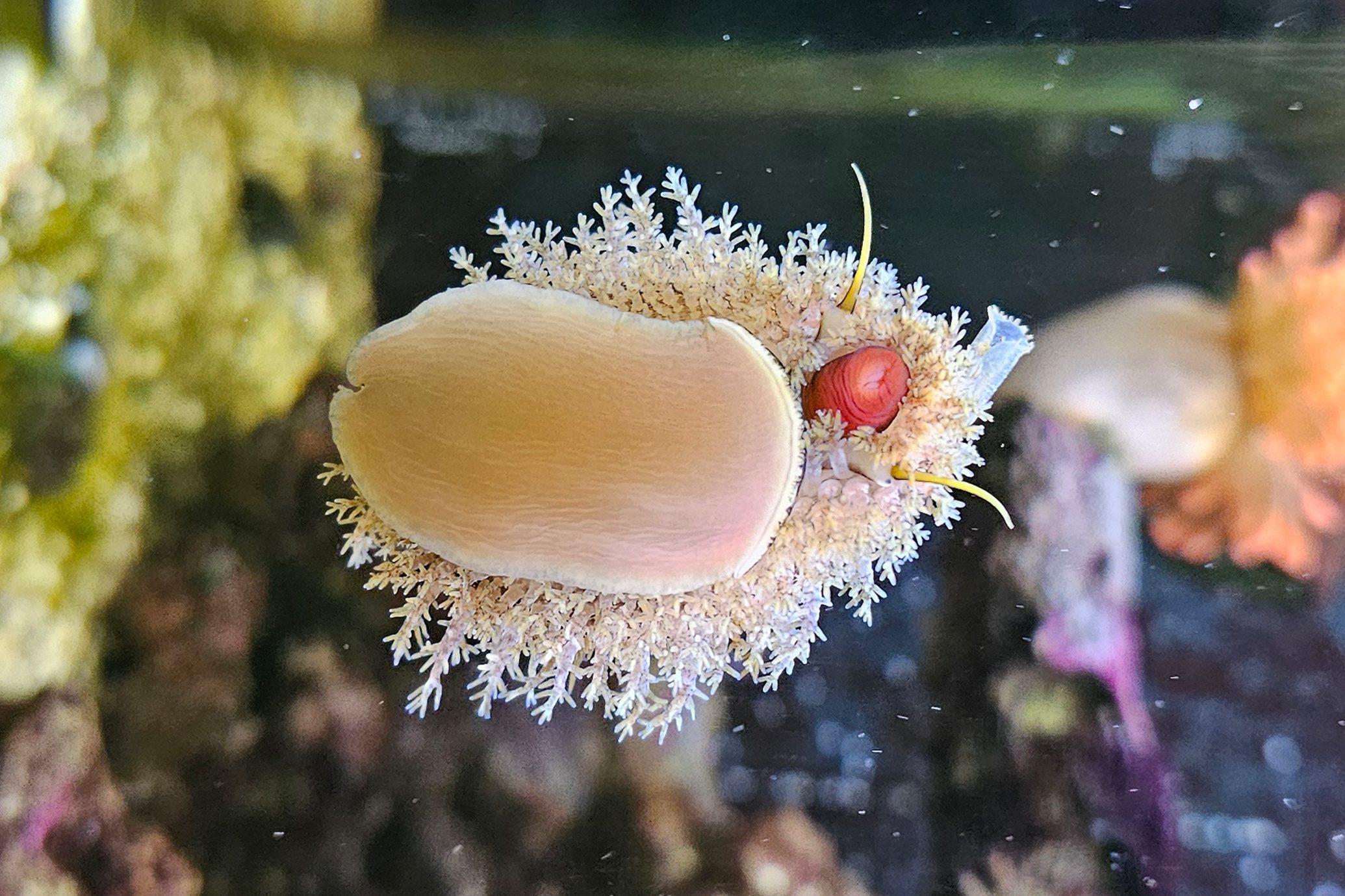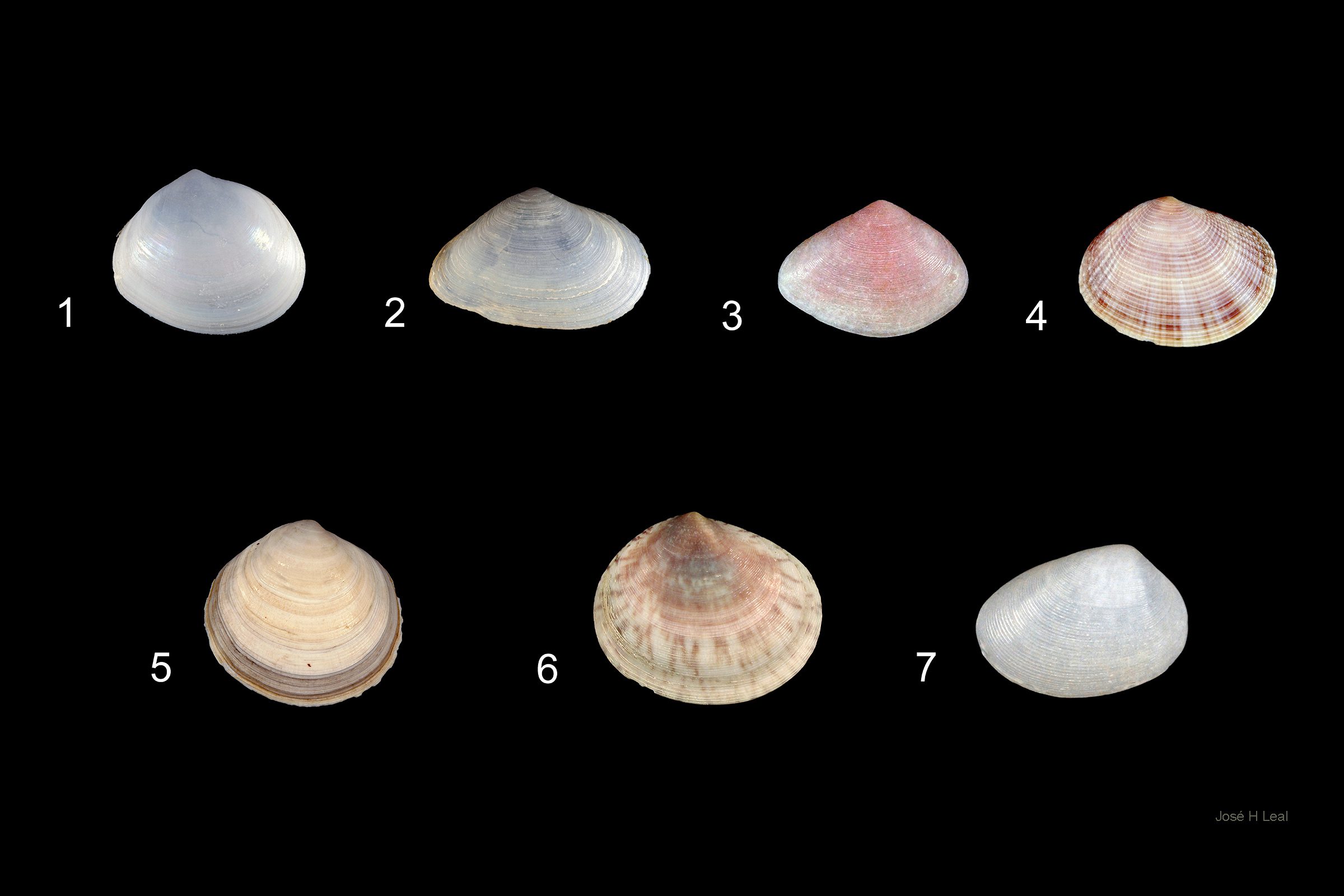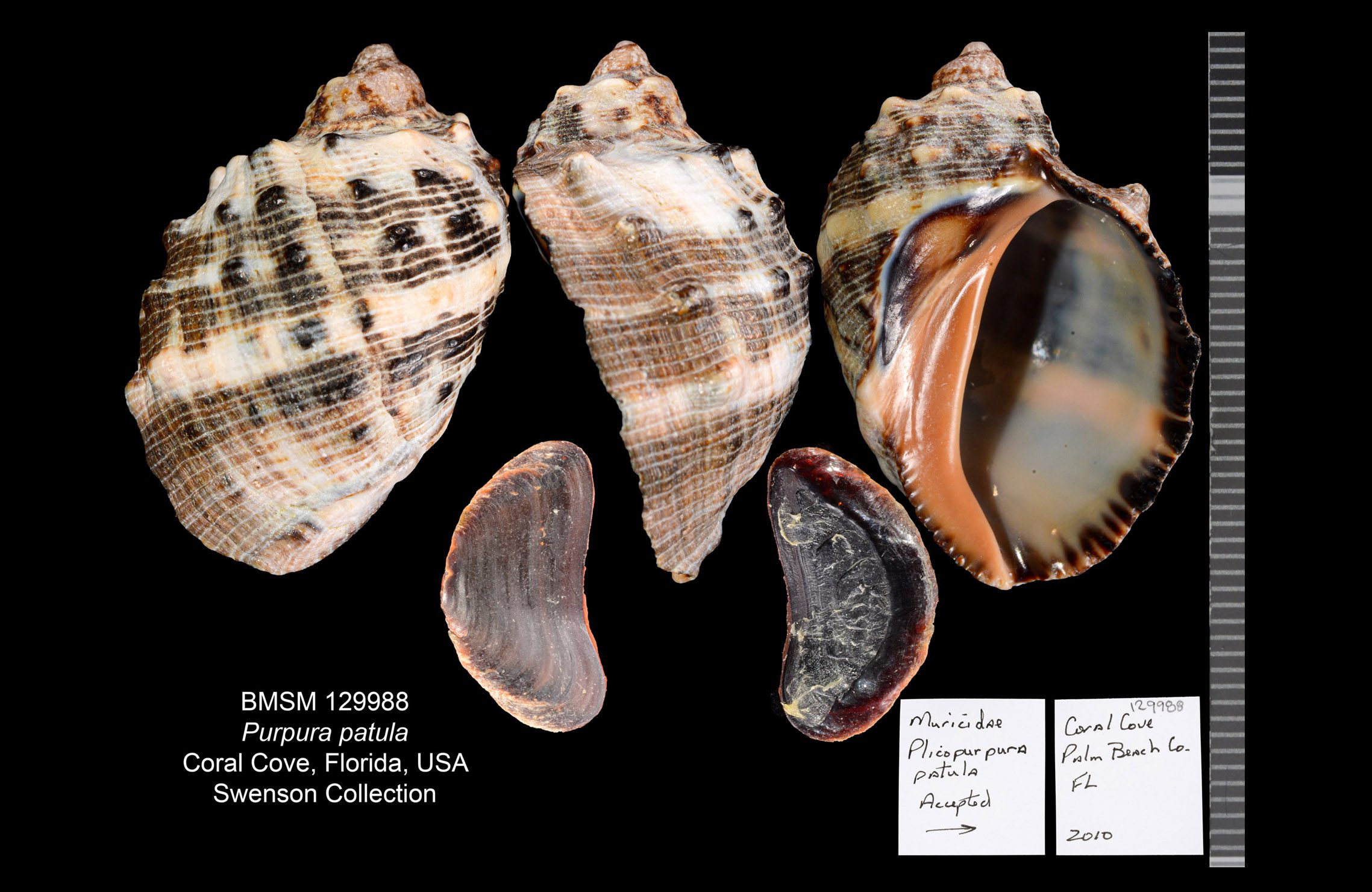The Wedge Piddock, Martesia cuneiformis (Say, 1822), is a wood borer that may be found in driftwood and floating logs in the Western Atlantic Ocean and Gulf of Mexico. The shell, which may attain ¾ inch in length, is usually pear-shaped, and very thin. Typically, Piddock clams have the anterior (wider) part of the shell equipped with rows of tiny tooth-like projections. These act as a cheese grater, enabling the clam to bore its way into the wood. For readers who collect this column: a closely related species, the Striate Piddock, was featured on March 7, 2014. The two species differ mainly by the shape of the accessory plate, or mesoplax, located on top of the shell in the central picture below: the mesoplax is oval-shaped in the Wedge Piddock, and squarish in the Striate Piddock.

The Wedge Piddock, Martesia cuneiformis


